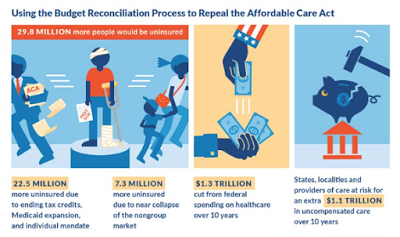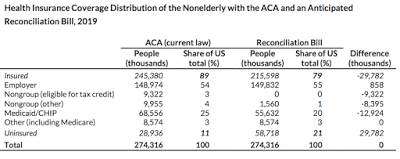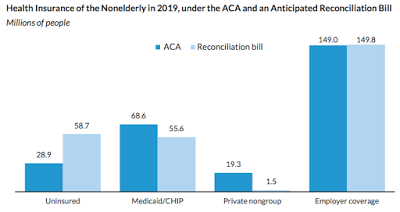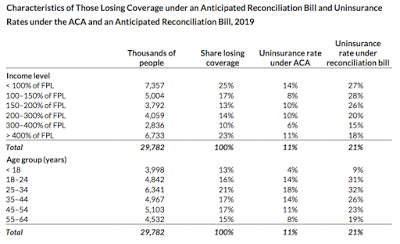
This article was last updated on April 16, 2022
Canada: ![]() Oye! Times readers Get FREE $30 to spend on Amazon, Walmart…
Oye! Times readers Get FREE $30 to spend on Amazon, Walmart…
USA: ![]() Oye! Times readers Get FREE $30 to spend on Amazon, Walmart…
Oye! Times readers Get FREE $30 to spend on Amazon, Walmart…
An analysis by the Urban Institute entitled “Implications of Partial Repeal of the ACA through Reconciliation” takes a detailed look at what will happen to Americans should Congress partially repeal Obamacare. Under a budget reconciliation bill which could be introduced in early 2017, only components of the Affordable Care Act that fall under the federal budget can be impacted including the following:
1.) elimination of the Medicaid expansion.
2.) elimination of the federal finical assistance for Marketplace coverage (i.e. cost-sharing reductions and premium tax credits).
3.) elimination of the individual and employer mandates.
The following aspects of the insurance market reforms under the ACA would remain intact:
1.) non-group market guaranteed issue.
2.) the prohibition on pre-existing conditions exclusions.
3.) modified community ratios.
4.) actuarial value standards.
5.) essential health benefit requirements.
If a budget reconciliation bill similar to the one passed by Congress and vetoed by President Obama in January 2016 is passed, the effects would be widespread. Here is a graphic that shows a summary of the impact of the budget reconciliation process and how it could be used to partially repeal the Affordable Care Act:
Let’s look at more detail. If a partial repeal of the ACA took place, this table compares the coverage distribution of non-elderly Americans under the current and partial ACA repeal scenarios in 2019:
Here is a graphic showing what will happen to health insurance levels of the non-elderly in 2019 under both scenarios:
To summarize, a partial repeal of the ACA would increase the number of uninsured people by 29.8 million in 2019, bringing the total uninsured to 58.7 million people or 21 percent of the non-elderly population compared to 28.9 million people if the ACA remains in effect. Even more notable, the number of uninsured non-elderly Americans would be significantly higher in 2019 than the 50 million who were uninsured in 2009 before the ACA was passed.
Basically, if the ACA was gutted by a budget reconciliation bill in 2017, two key factors would cause the disintegration of the non-group health insurance market:
1.) the elimination of the individual mandate penalty would reduce the incentive to enrol for healthy Americans who can afford coverage.
2.) the elimination cost-sharing assistance and tax credits for insurance premiums would make coverage unaffordable for many people who are currently covered, resulting in an increase in dropped coverage.
The impact of a partial repeal of Obamacare would vary on a state-by-state basis. On average, the states that expanded Medicare would be the hardest hit with the number of people uninsured rising from 14 million to 32.5 million in 2019, an increase of 132 percent. In states that did not expand Medicare, the number of uninsured people will still rise substantially from 14.9 million to 26.2 million, an increase of 75.8 percent. Among the states that expanded Medicare, here are the top five worst case states in terms of percentage increase in uninsured:
Massachussets – uninsured increase of 273 percent
West Virginia – uninsured increase of 208 percent
Kentucky – uninsured increase of 200 percent
New Hampshire – uninsured increase of 190 percent
Oregon – uninsured increase of 186 percent
Among the states that did not expand Medicare, here are the top five worst case states in terms of percentage increase in uninsured:
Wisconsin – uninsured increase of 144 percent
Maine – uninsured increase of 122 percent
Nebraska – uninsured increase of 111 percent
Idaho – uninsured increase of 101 percent
Missouri – uninsured increase of 93 percent
In closing, let’s take a partial look at the socioeconomic groups that would suffer the most under a partial repeal of Obamacare:
The study found that approximately 53 percent of those becoming uninsured would be people with family incomes ranging from 100 to 400 percent of the Federal Poverty Line (FPL); in addition, the study calculates that the uninsurance rate for American families with incomes ranging from 150 to 200 percent of the FPL will jump from 10 percent under the ACA to 26 percent under budgetary reconciliation. A total of 49 percent of adults ranging in age from 35 to 64 will join the ranks of the uninsured with 80 percent of uninsured adults lacking a college degree.
The impact on the Affordable Care Act of the 2017 budget reconciliation to be introduced in the Republican-controlled House and Senate could be very substantial, leaving tens of millions of Americans without health insurance; in fact, according to the analysis by the Urban Institute, the situation would be worse than it was prior to the introduction of the ACA. Since there would be a collapse of the non-group insurance market, the United States would find itself in a situation where there would be a higher number of uninsured American families than before the Affordable Care Act was enacted. This will make it increasingly financially difficult for American families, particularly those in the low- to middle-income range.
Click HERE to read more.
You can publish this article on your website as long as you provide a link back to this page.





Be the first to comment